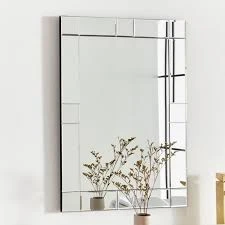

Understanding Low-E 270 Glass Enhancing Energy Efficiency in Modern Architecture
In recent years, energy efficiency has become a paramount consideration in the field of architecture and building design. One of the most significant advancements that contribute to this goal is the development of Low-E (low emissivity) glass. Among various types of Low-E glass, Low-E 270 glass has emerged as a popular choice for residential and commercial buildings alike. This article aims to provide an in-depth understanding of Low-E 270 glass, its benefits, applications, and its role in promoting sustainability.
What is Low-E 270 Glass?
Low-E 270 glass refers to a specific type of low emissivity glass that features a microscopically thin coating, designed to reflect heat while allowing natural light to enter spaces. The 270 signifies the transmittance and reflectance properties of the glass, which make it particularly effective at filtering out certain wavelengths of solar radiation. This feature allows for optimal daylighting, ensuring that interiors remain well-lit without compromising comfort or energy usage.
How Does Low-E 270 Glass Work?
The low emissivity coating on Low-E 270 glass plays a crucial role in its functionality. This coating is engineered to reflect infrared radiation while permitting visible light to pass through. Essentially, during the summer months, Low-E 270 glass reflects harsh solar heat, reducing the need for air conditioning and thereby lowering energy costs. In contrast, during winter, it traps indoor heat, minimizing energy loss and keeping spaces warm.
The dual functionality of Low-E 270 glass makes it particularly versatile. It is efficient in managing heat gain and loss, thus significantly contributing to the overall energy performance of buildings. Moreover, this type of glass maintains an aesthetically appealing façade, as it does not distort colors or visibility.
Benefits of Low-E 270 Glass
1. Energy Efficiency The most significant advantage of Low-E 270 glass is its ability to reduce energy consumption. Buildings equipped with this type of glass can achieve considerable savings on heating and cooling expenses, making them more economical in the long run.

2. Comfort By regulating internal temperatures, Low-E 270 glass contributes to a more comfortable indoor environment. Occupants enjoy a consistent temperature without the discomfort of drafts or excessive heat during different seasons.
3. UV Protection Low-E 270 glass also offers protection against harmful ultraviolet (UV) rays. This is particularly beneficial for homes and businesses that contain artwork, furniture, or fabrics that can fade over time due to prolonged exposure to sunlight.
4. Sustainability By reducing the energy demand of buildings, Low-E 270 glass contributes to a decrease in carbon emissions associated with energy production. This aligns with global sustainability goals and promotes eco-friendly building practices.
5. Design Flexibility Available in various thicknesses and styles, Low-E 270 glass can seamlessly integrate into different architectural designs, offering aesthetic appeal without sacrificing functionality.
Applications of Low-E 270 Glass
Low-E 270 glass is widely used in both residential and commercial applications. In homes, it is commonly utilized in windows, sliding glass doors, and even skylights, enhancing energy efficiency while allowing natural light to flood interiors. In commercial buildings, this type of glass is integral in office buildings, retail spaces, and schools, where energy performance and occupant comfort are critical.
Conclusion
In summary, Low-E 270 glass represents a significant stride toward energy-efficient building practices. Its unique properties of heat management, UV protection, and aesthetic appeal make it an excellent choice for modern architecture. As society becomes increasingly conscious of environmental impacts, the demand for products like Low-E 270 glass will likely continue to grow, paving the way for sustainable construction practices. By investing in architectural solutions that utilize Low-E technology, we can create comfortable, efficient, and environmentally responsible spaces for future generations.